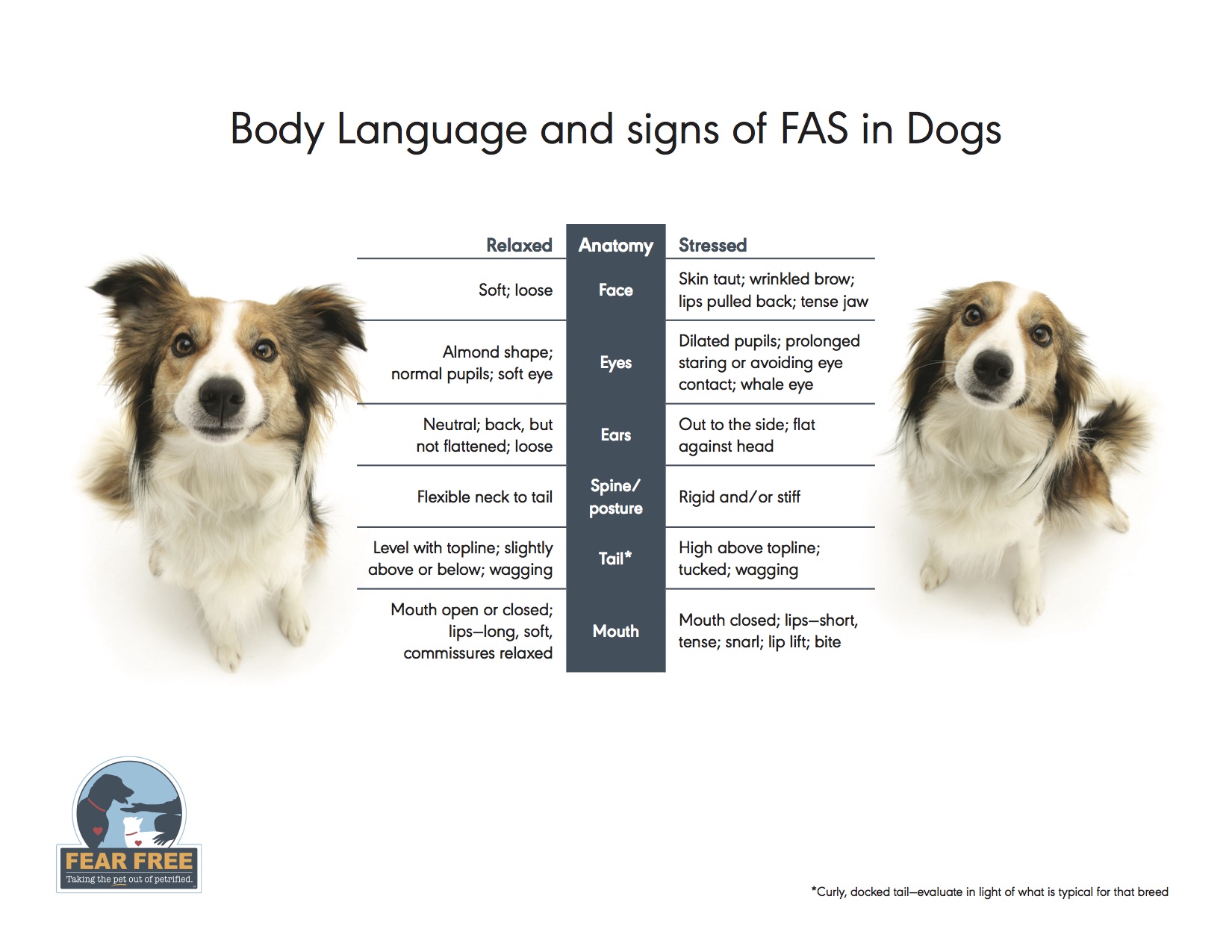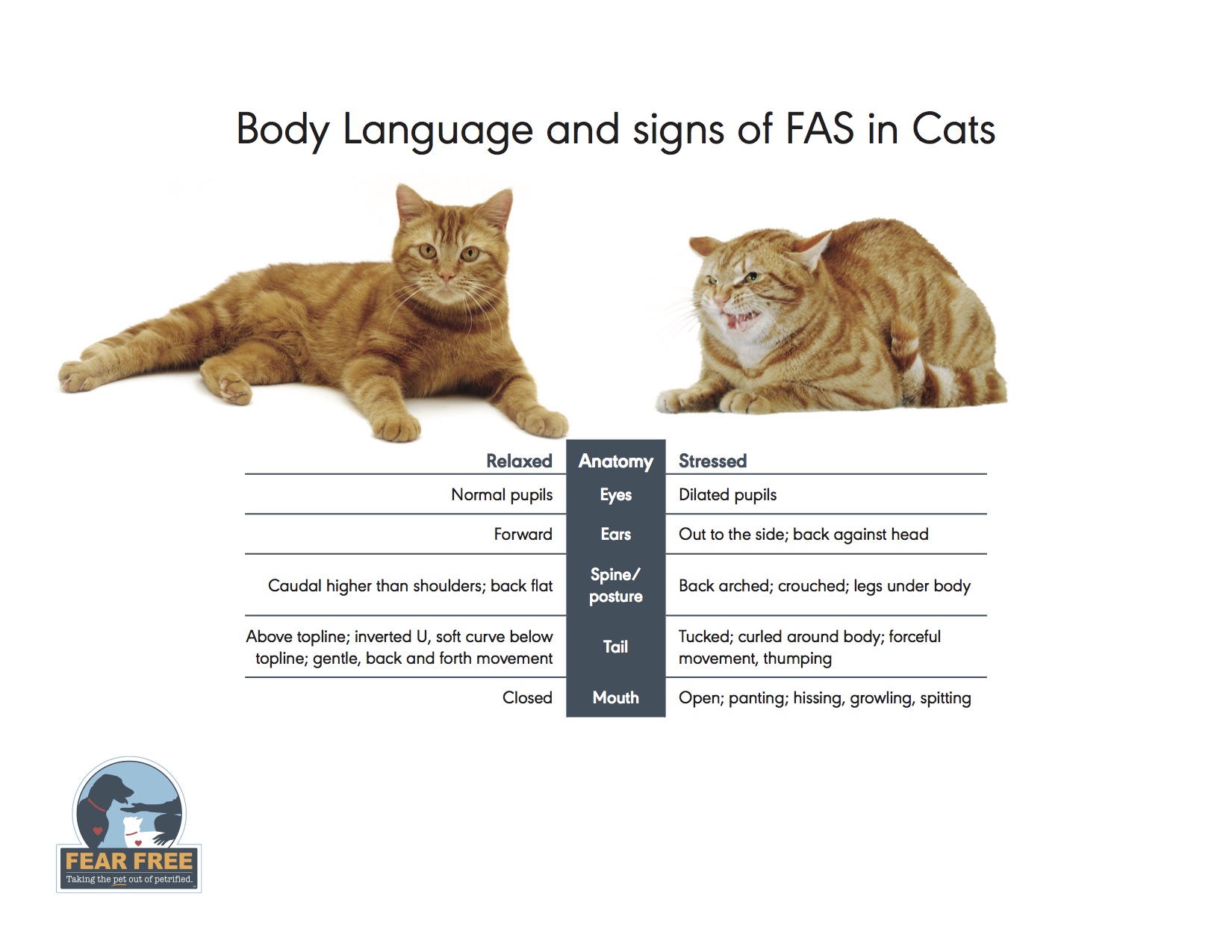
Welcome back to our quarterly blog series, Check Up with Blum! With each entry, we are discussing a topic about canine health that affects your Chicago pet! Join us this month as we cover a new topic with Dr. Sarah Baker of Blum Animal Hospital and learn about how you can help keep your best friend healthy and happy in the big city!
This time on Check Up with Blum, we are talking about reading your dog’s body language! Recognizing the signs of fear, anxiety, and stress in your pet is an important part of helping them feel happier in life. Once you know the signs for what makes your dog stressed vs what makes him or her relaxed, you can take steps to make your pooch feel relaxed more often! Read on to learn more about your dog’s body language!
When considering body language, how do I know that my dog is happy and relaxed?
According to Dr. Baker, relaxed body language in your dog would look like:
• a soft face/eyes
• normal pupils
• neutral/loose ears
• a wagging tail in line with their back (not extremely high or low)
• soft lips
How do I know when he or she is stressed or otherwise upset?
Dr. Baker states that stressed body language is characterized by:
• taut skin
• a wrinkled brow
• dilated pupils
• prolonged staring or, conversely, avoiding eye contact
• ears flat against your pooch’s head
• extremely high or low tail that can be wagging
• closed mouth with tense lips
• lifting his or her lips or trying to bite
Another body language sign to watch for in your dog is whale eye, which happens when a dog is trying to divert his or her face away from a person or object but still maintains eye contact. If your dog is displaying “whale eye,” you will see the white of his or her eye, like your dog is strongly looking away or to the side. This is a sign of fear, anxiety, and stress (or “FAS” for short).
To learn more about these basic body language signs, take a look at the FAS handout on this page.

You can tell a lot about a dog’s mood by their mouth. What are some things to notice in your dog’s mouth position to indicate their stress levels?
If a dog’s mouth is open with soft, relaxed lips and the dog appears to be smiling, they are calm and happy! If his or her mouth has a tenser appearance and your pup is showing his or her teeth, it may look like a “smile,” but this is not a happy and relaxed sign for a dog.
In regard to yawning, a dog’s yawn needs to be interpreted with their body language! This really can be a sign of sleepiness in the appropriate environment, like at home lounging on the couch. In a “stressful” environment, such as the veterinary clinic, excessive yawning (or lip licking) can be a sign of anxiety.
Baring teeth should not be interpreted as a “happy” response in any situation.
How can your dog’s tail tell you about how he or she is feeling?
According to Dr. Baker, a dog’s tail can tell you so much! Wagging does not necessarily mean happiness. The POSITION of the dog’s tail should be assessed to determine a relaxed versus stressed posture. A tail in line with your dog’s back or just slightly above or below it is a happy wag. When your dog’s tail is extremely high or tucked under and wagging, this would be a sign of stress.
Be sure to look out for tail position and the other signs of FAS when your pup is playing with other furry friends too to make sure everyone stays safe and happy!
What should I do if I realize that my dog is feeling stressed or fearful?
Dr. Bakers suggests that if your dog is feeling stressed, you should try to help identify the stressful trigger and remove him or her from the situation or resolve the issue. Use a calm, neutral tone of voice when speaking and try to find high reward treats to help divert your pup’s attention.
Being able to identify relaxed versus stressed body language in your dog is extremely important and helps create a fear free, happy home and life for your pet!
Thank you to Dr. Sarah Baker at Blum Animal Hospital for her insight helping to read our dogs’ body language! We appreciate her hard work in making sure that every Chicago pet has the best life possible!
Blum Animal Hospital is located at 3219 N. Clark Street and has been caring for Chicago’s pets since 1952. They have been accredited by the American Animal Hospital Association (AAHA) since 1972. To learn more about Blum, their Fear Free certification and the calming techniques they use, check out their website!
Windy City Paws is a Chicago dog walker and petsitter committed to providing helpful information to Chicago dog owners through its blog.





